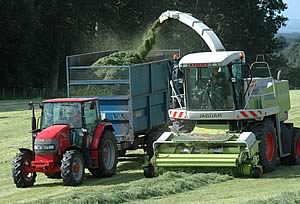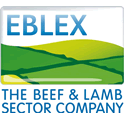 |
|||||||||
|
|||||||||||||||||||
|
|
Integrate Silage Making Carefully with Grazing With cereal and straw rations offering particularly attractive current winter beef and sheep feeding options, grazing livestock producers across the country should think more about how much silage they need rather than how much they can make this season, suggests EBLEX – the industry body for beef and lamb levy payers; all the more so with the undisputed value of grazed grass over the summer months.
At an estimated 6.5p/kg dry matter (DM), well-managed grazed grass is undoubtedly the most economic summer feed for beef and sheep. However, grass silage currently costs around 14p/kg DM so wider use of cereals or arable co-products and straw may be more economical over the coming winter for many. Fundamental to this will be making the amount and quality of winter forage that is actually required for the specific stock being kept and minimising all unnecessary losses. After all, the quality requirements of cattle to be finished over the winter months are very different from those of spring calving suckler cows or ewes. At the same time, post-harvest silage DM losses in the field, storage and feeding out can easily amount to 25% or more, substantially increasing the amount that needs to be made and, as a direct consequence, the availability of summer grazing.
A special EBLEX Better Returns for Silage leaflet is available free of charge to levy payers keen to make the most of this season’s conservation by e-mailing brp@eblex.co.uk or calling 0870 2418829.
|
||||||||||||||||||

|
|
||||||||||||||||||
| home | agri-services | pedigree
pen | news | dairy | beef | machinery property | organisations | site map |
|||||||||||||||||||

